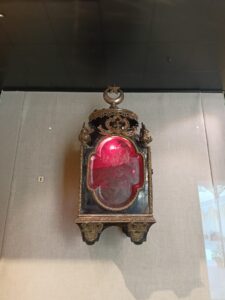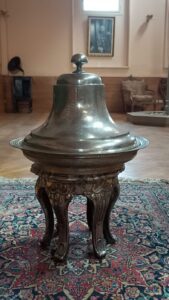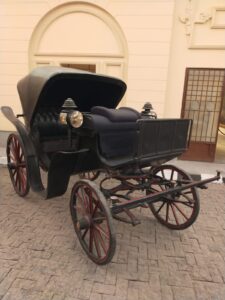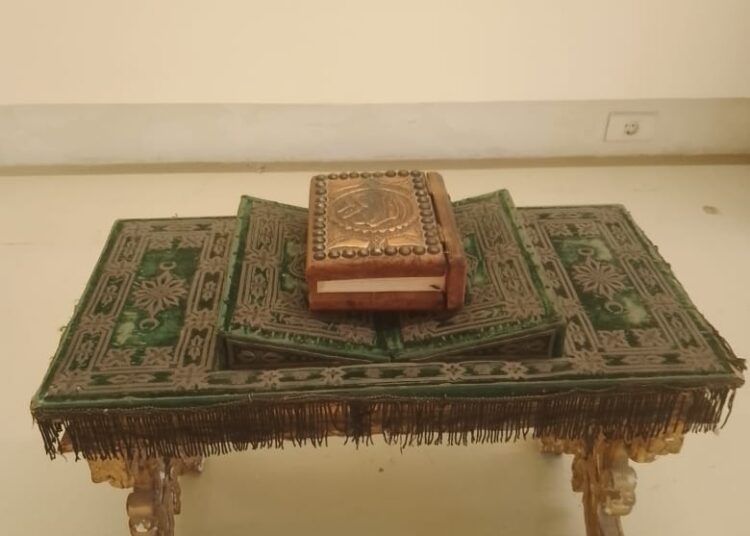Many museums across the country are holding temporary Ramadan-themed exhibitions and activities.
In the Royal Carriage Museum in the Cairo district of Boulaq, there is an exhibition, ‘Children, Bring Fawanees’, depicting the history of Islamic art in Egypt and traditions of the holy month.
The exhibition showcases two copper lanterns from the era of Mohamed Sa’id Pasha, Wali of Egypt and Sudan (1854-1863).
Also on display are a silver fruit plate from the family of Muhammad Ali Pasha, and a Victorian chariot used for visiting mosques. A documentary film explains the celebrations and preparations for Ramadan during the reign of the Muhammad Ali Pasha family.
Since its establishment by Khedive Ismail (1863-1879), it served as a place to preserve the cultural heritage of the royal carriages. It was equipped by successive royal rulers with experts, vets and skilled workers before it was converted into a museum after the July 1952 Revolution.
The Prince Mohamed Ali Palace, also known as Manial Palace Museum is holding a ‘Welcome Ramadan’ exhibition with 25 artefacts from the belongings of Prince Muhammad Ali Tawfiq (1875-1955), the heir presumptive of Egypt and Sudan in 1892-1899 and 1936-1952. The collection of prayer beads, prayer rugs, lanterns and receptacle for serving drinks were used specially for Ramadan.
His palace, which was built in the early 20th century, is considered a wonderful example of Islamic architecture and art, combining Moroccan, Persian and Syrian elements.
In Old Cairo’s Fustat, the National Museum of Egyptian Civilisation hosted “In the Spirit of Ramadan” — a series of heritage art workshops.
The museum team believes that introducing the popular heritage, lifestyles of the ancestors, their customs and traditions to the young generation are among the most prominent and important goals of the museum for everyone.
The museum held four workshops about the artworks inherited through generations according to Egyptian customs and traditions throughout the different ages, and a workshop to revive Islamic arts and the concept of the Ramadan lantern.
Another workshop, ‘the Art of Crochet’ showed trainees types of stitching and how to make Ramadan decorations.
The third workshop was for printing Islamic motifs and Ramadan shapes, such as Islamic motifs and how to use a stencil and make a lino template to make tablecloths with Islamic and Ramadan shapes and motifs.
The fourth workshop demonstrated how to make candles and how they are associated with heritage events in Egypt. Participants did small projects with candles with aromatic oils.
The museum was opened in 2017. It houses the twenty-two royal mummies which were transferred from the Egyptian Museum in Tahrir Square in a majestic parade. Among its unique artefacts is a laid-out skeleton of a young man dating back to the Upper Paleolithic age, 35,000 years.









Discussion about this post